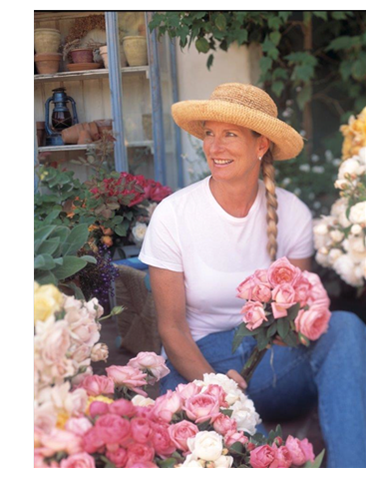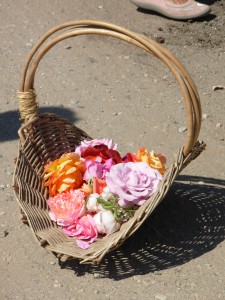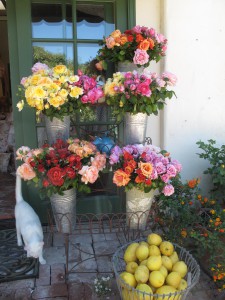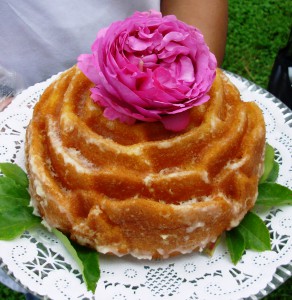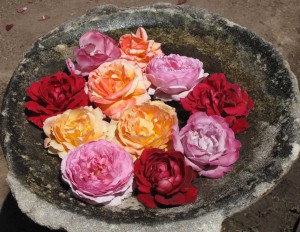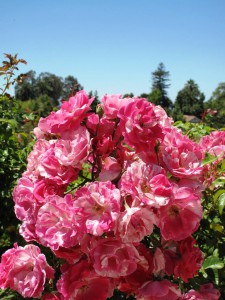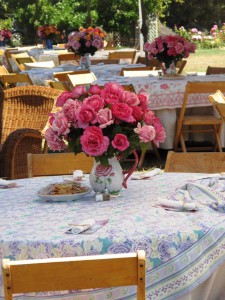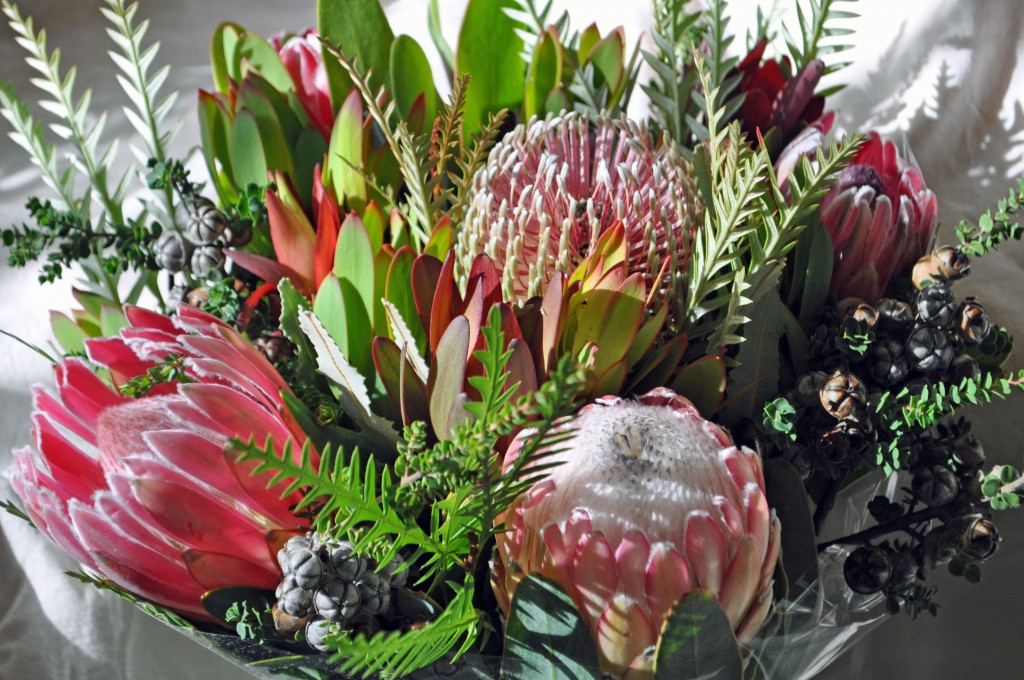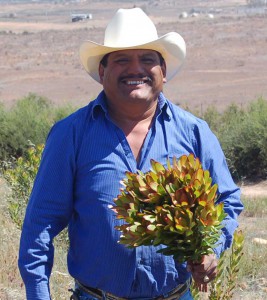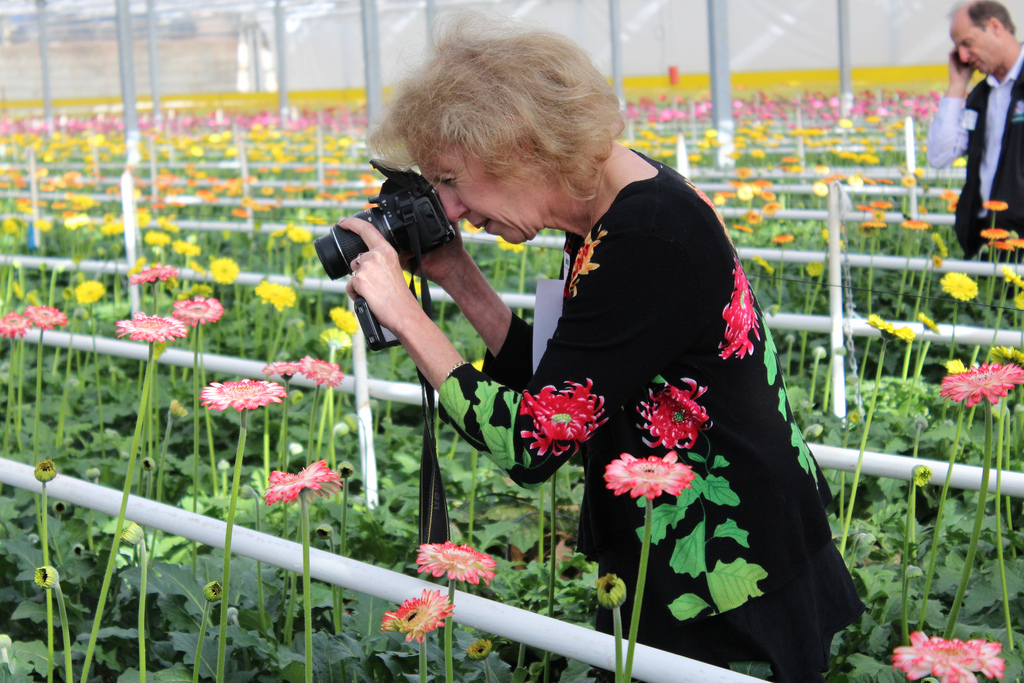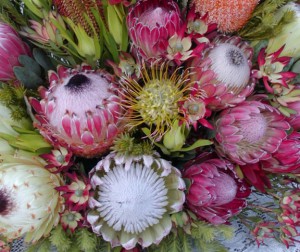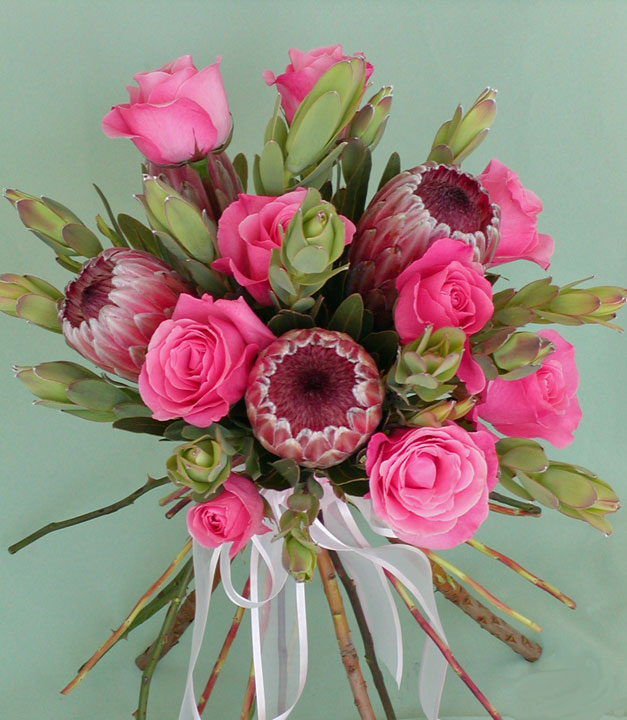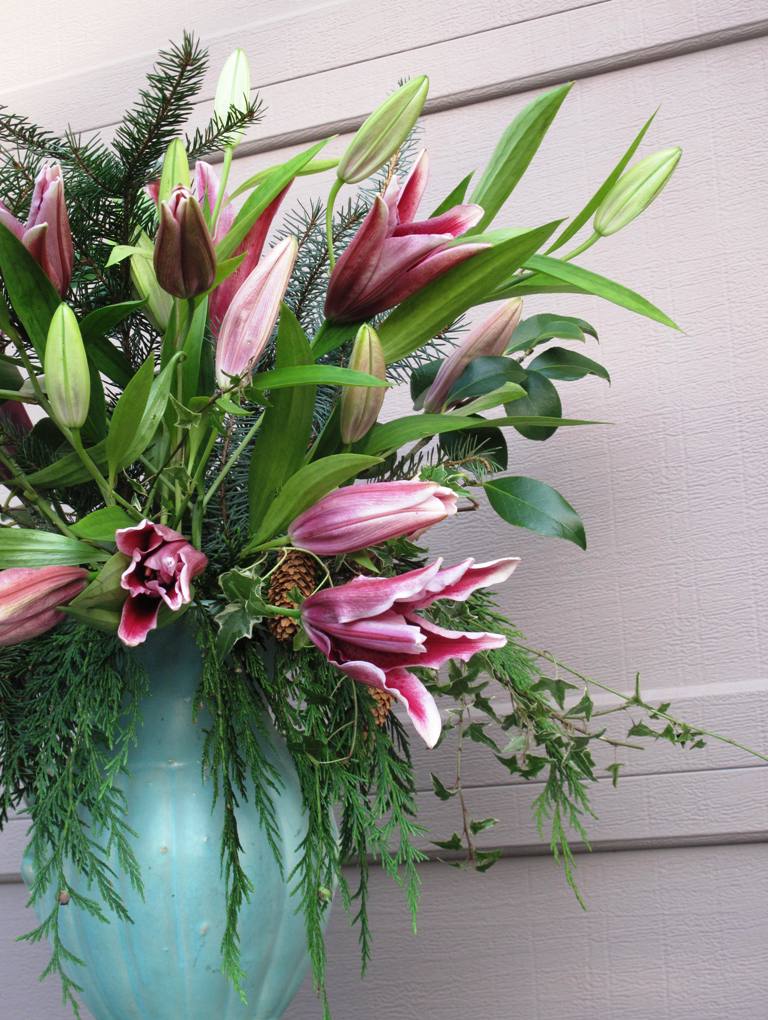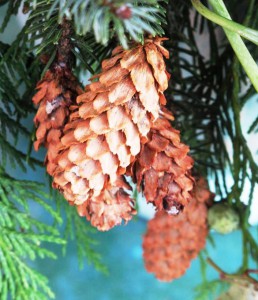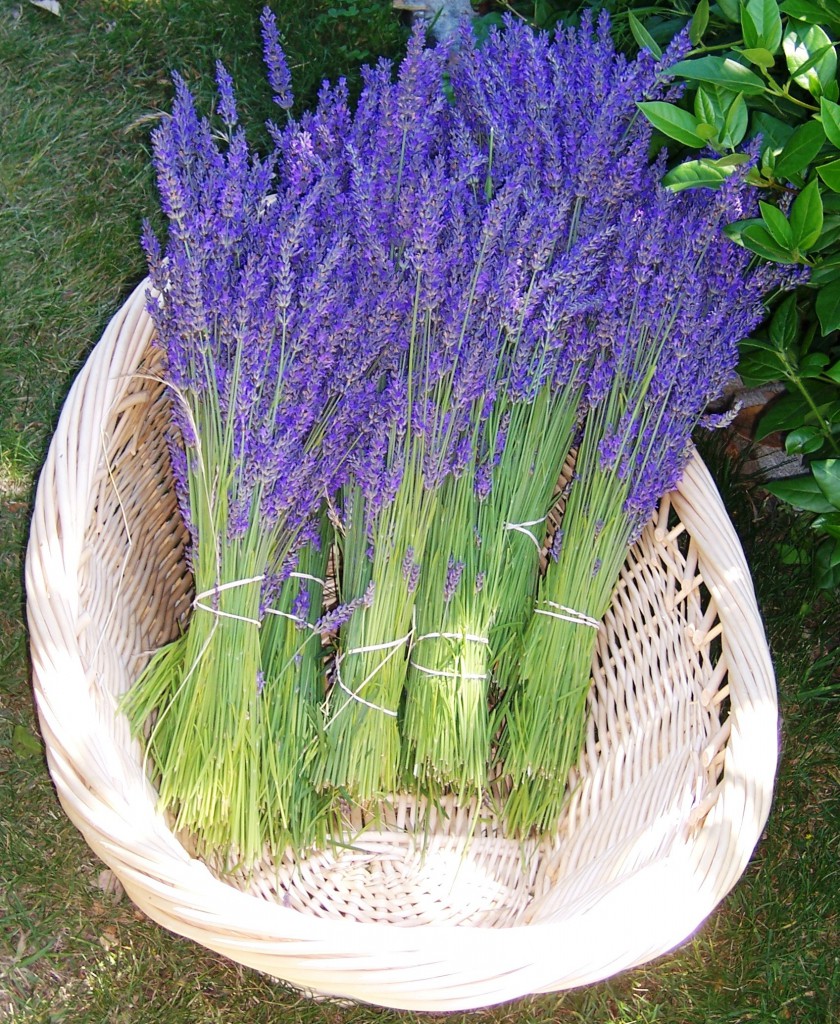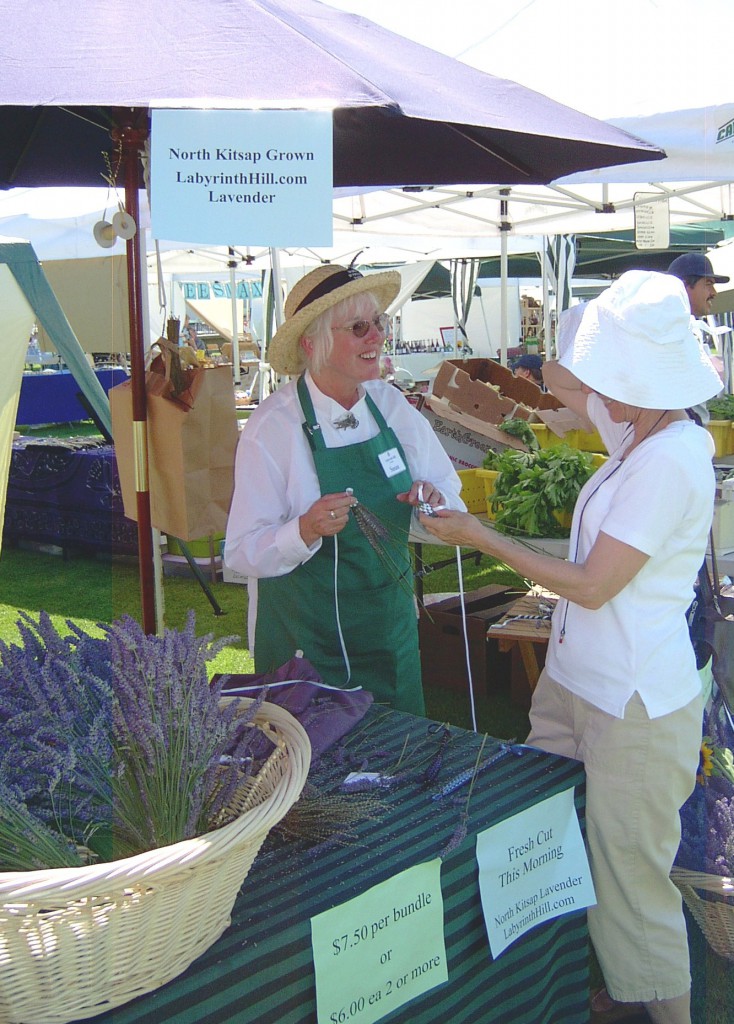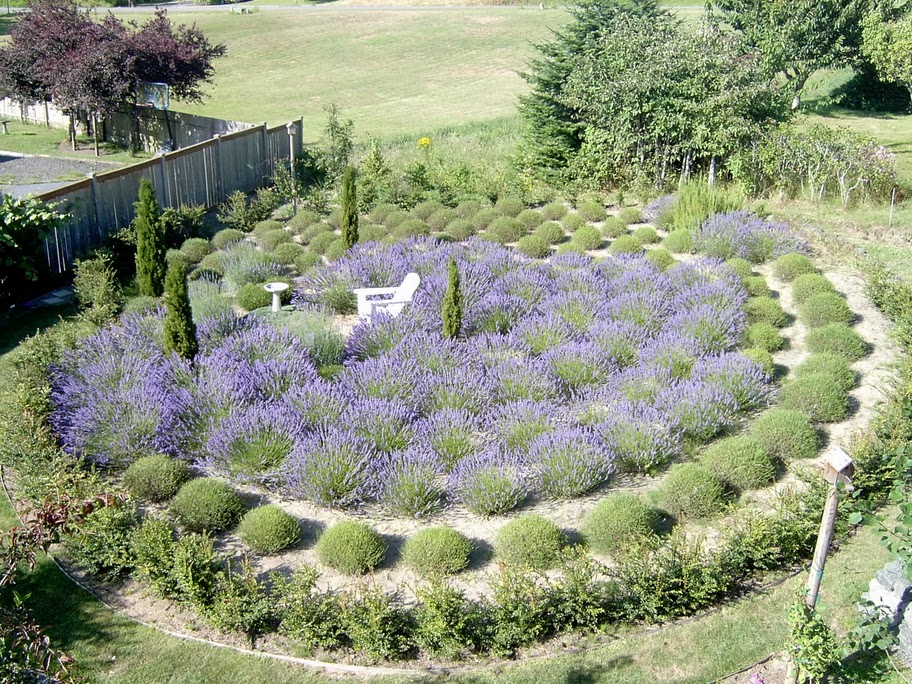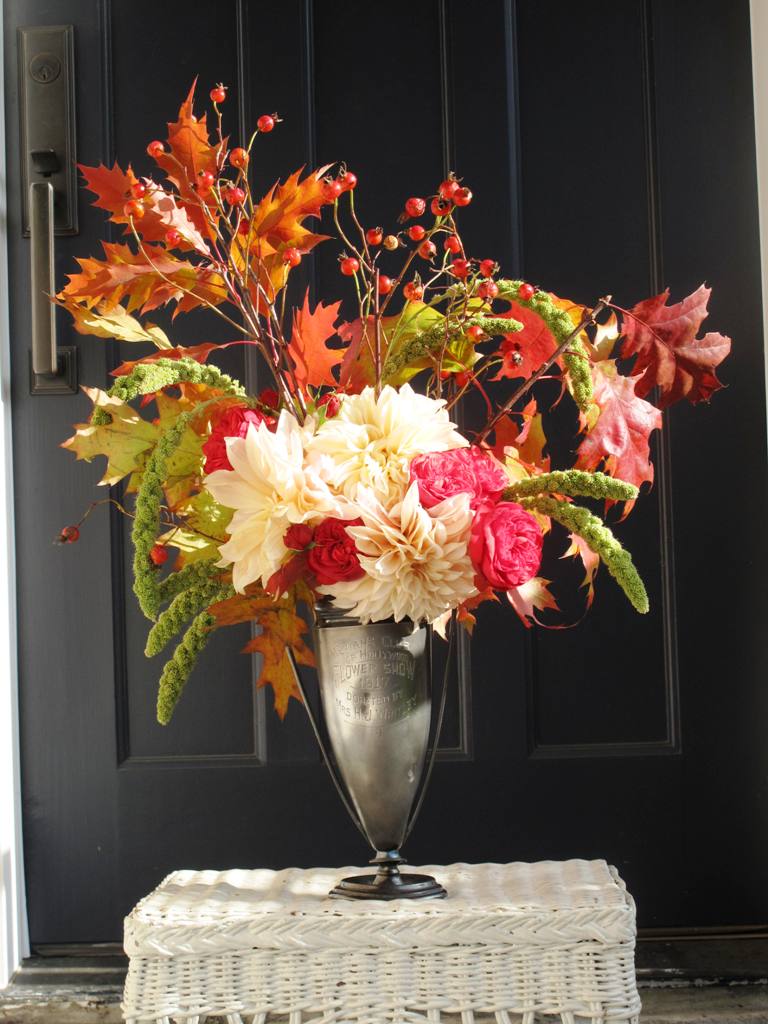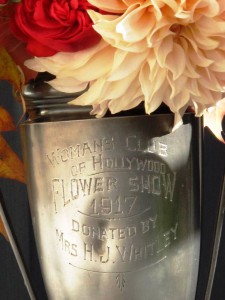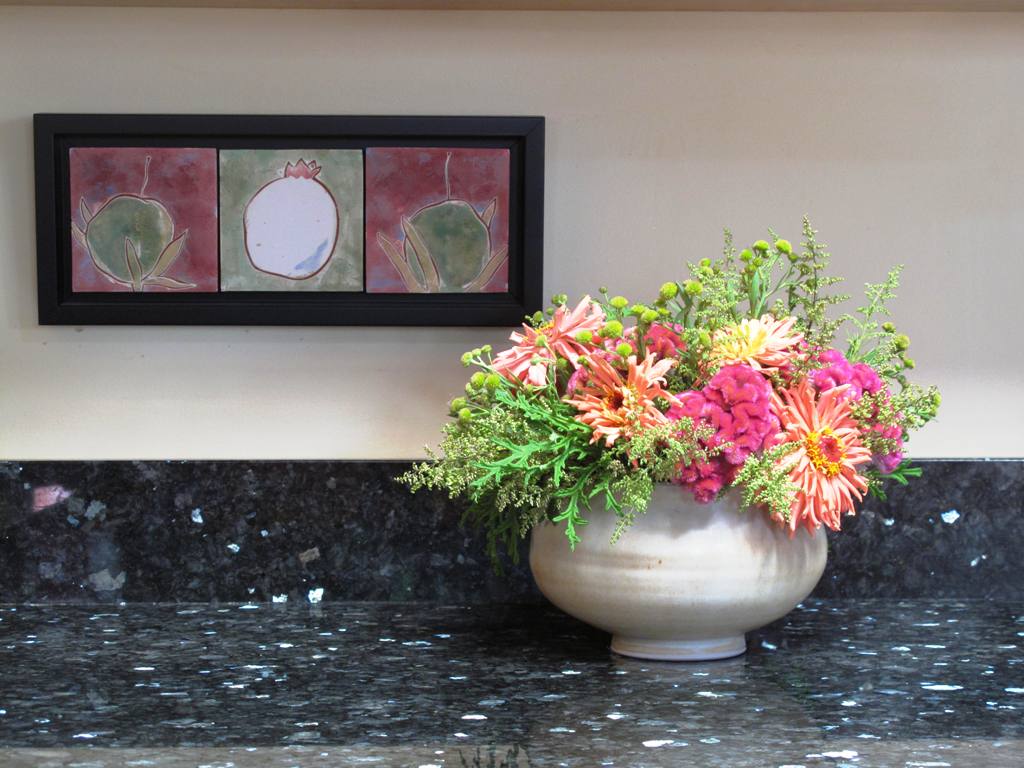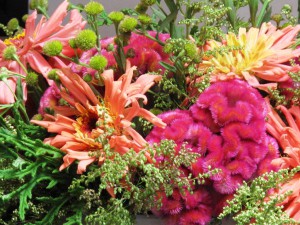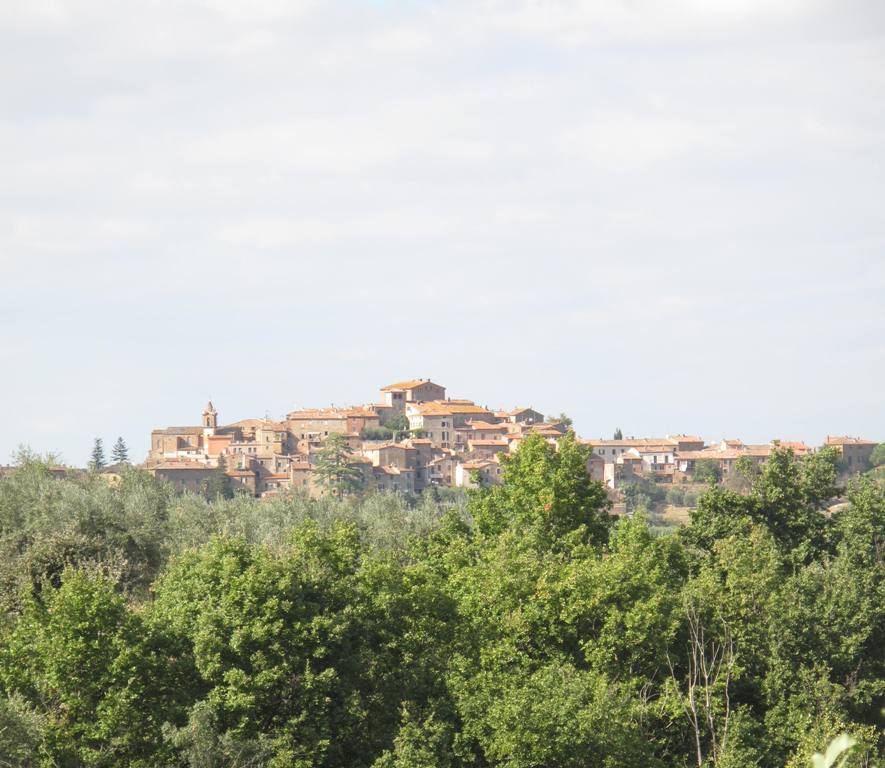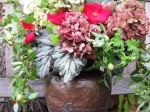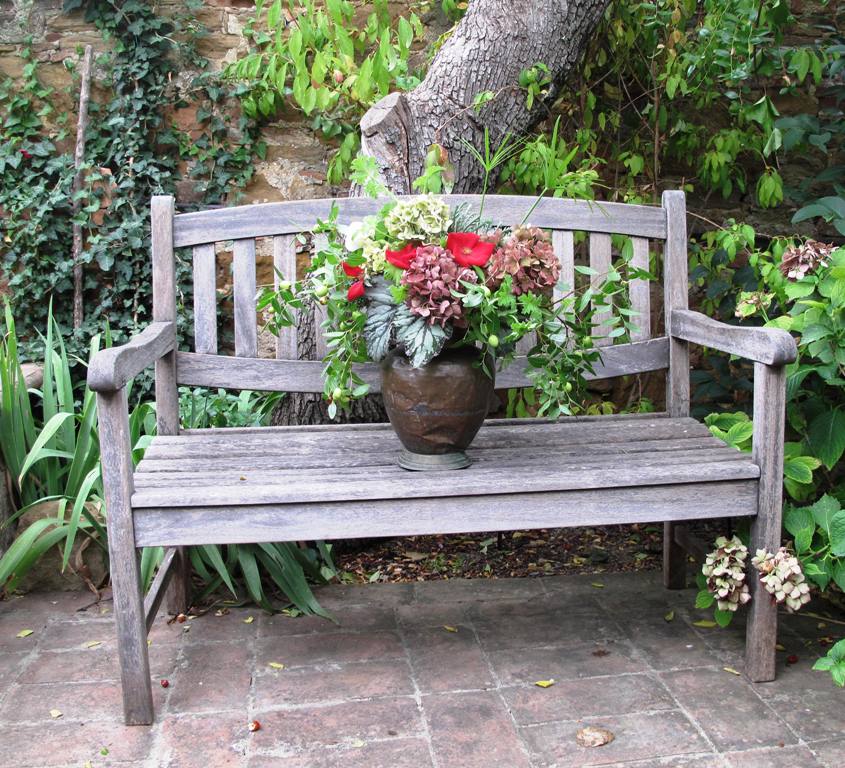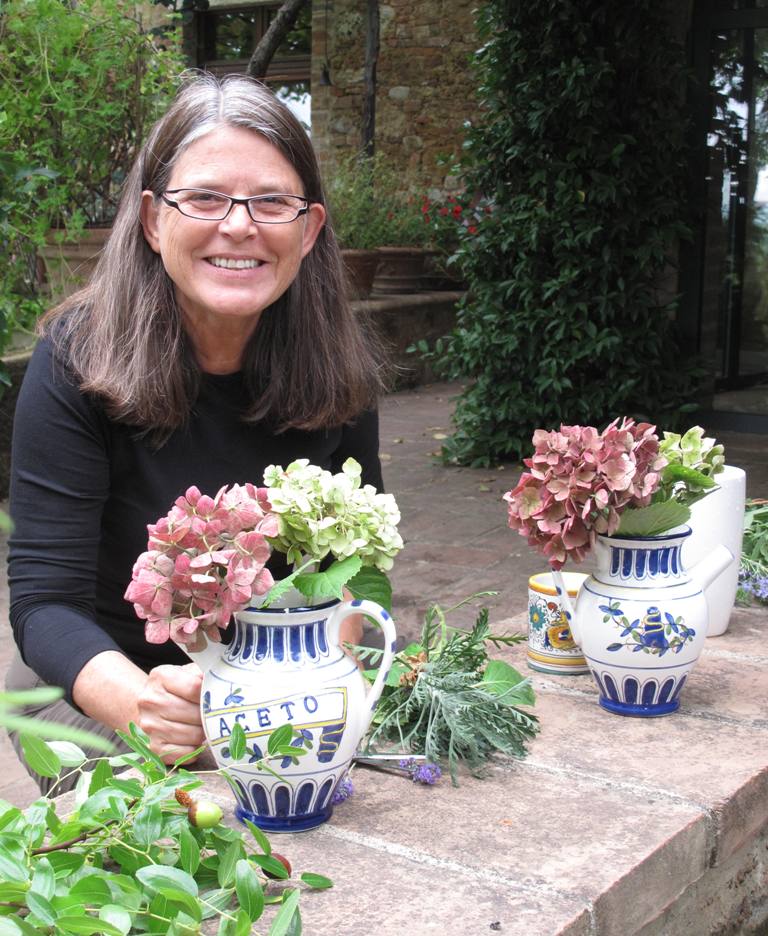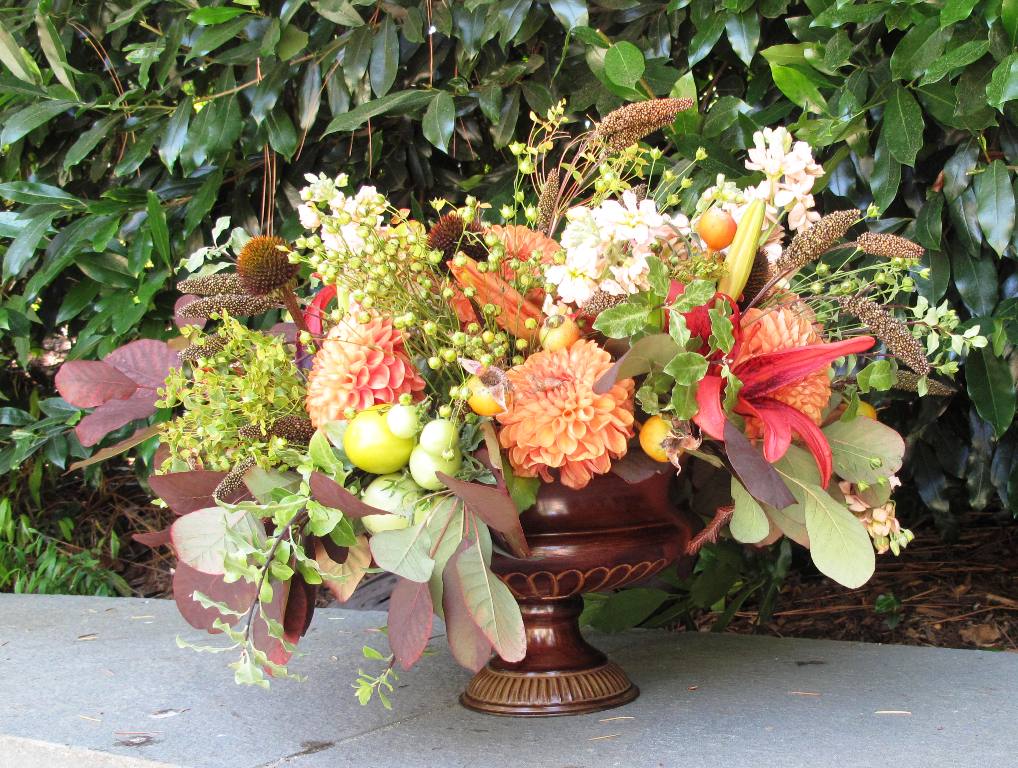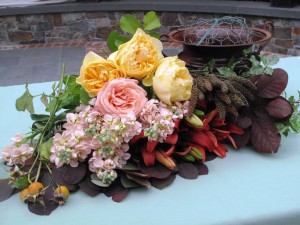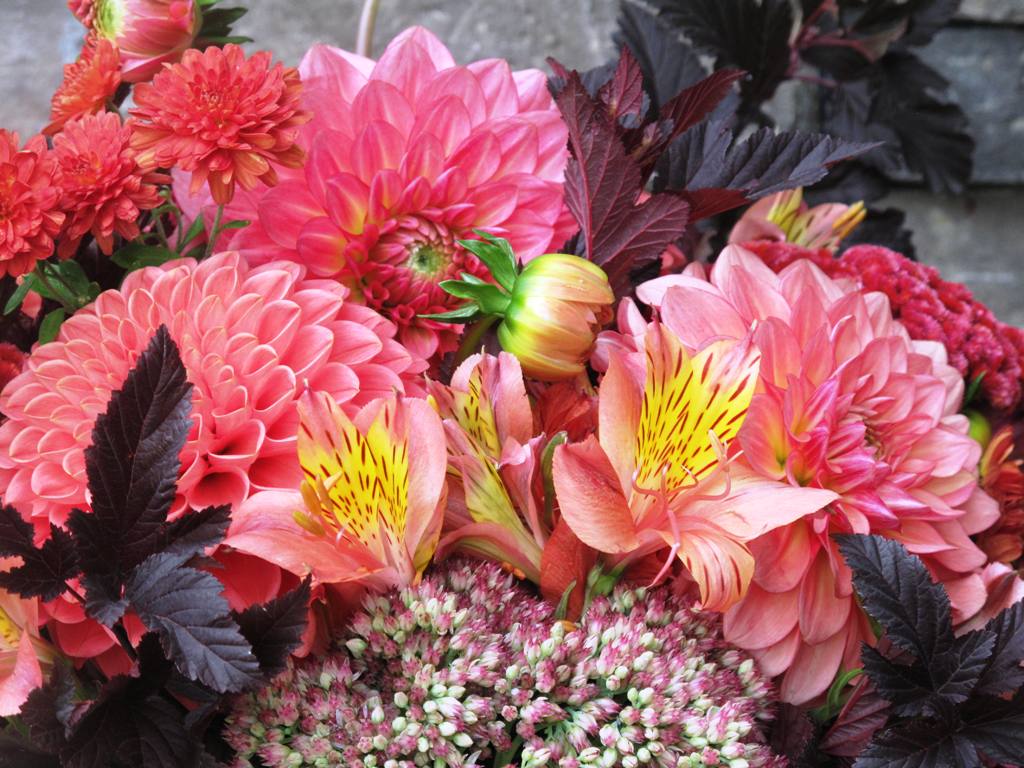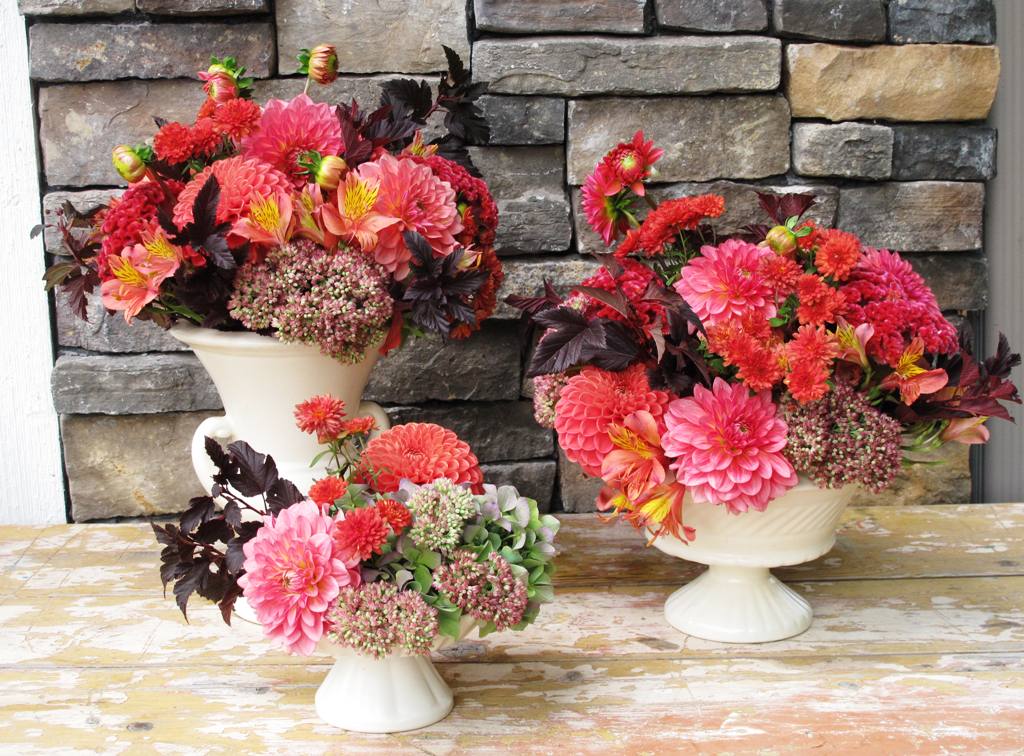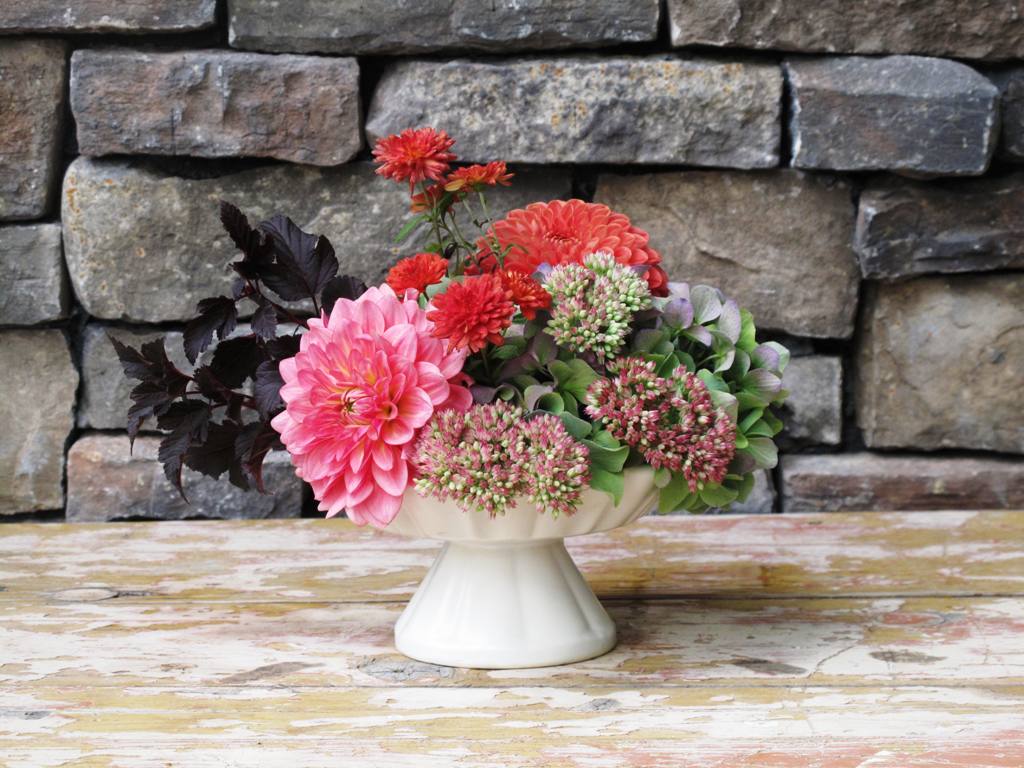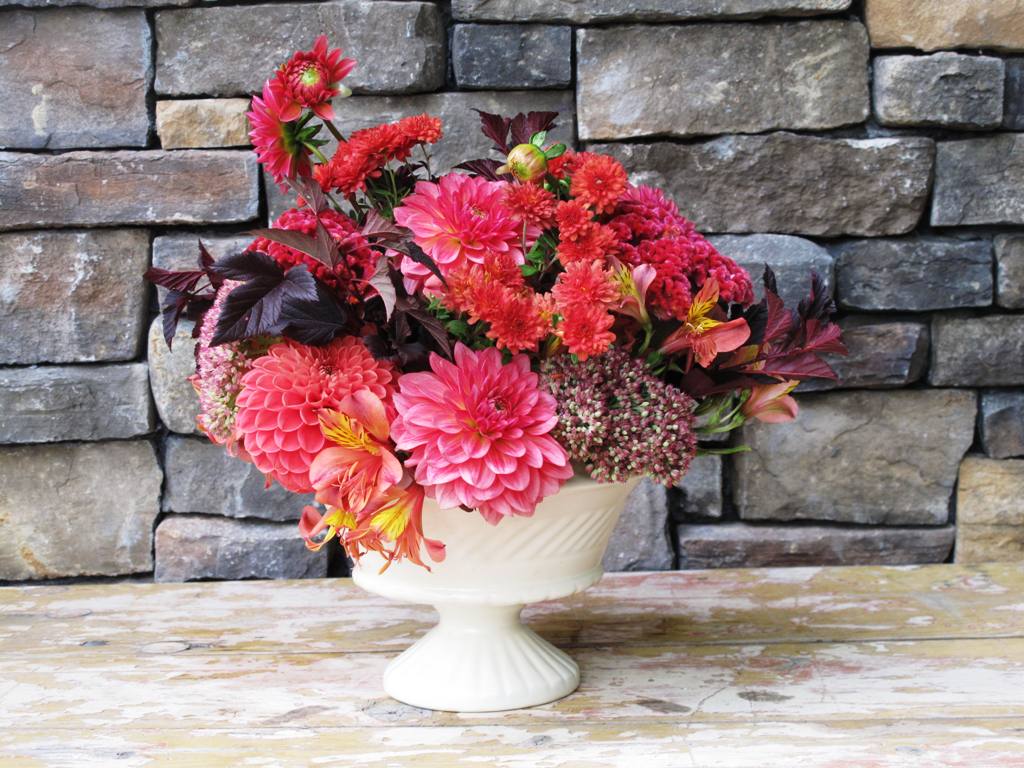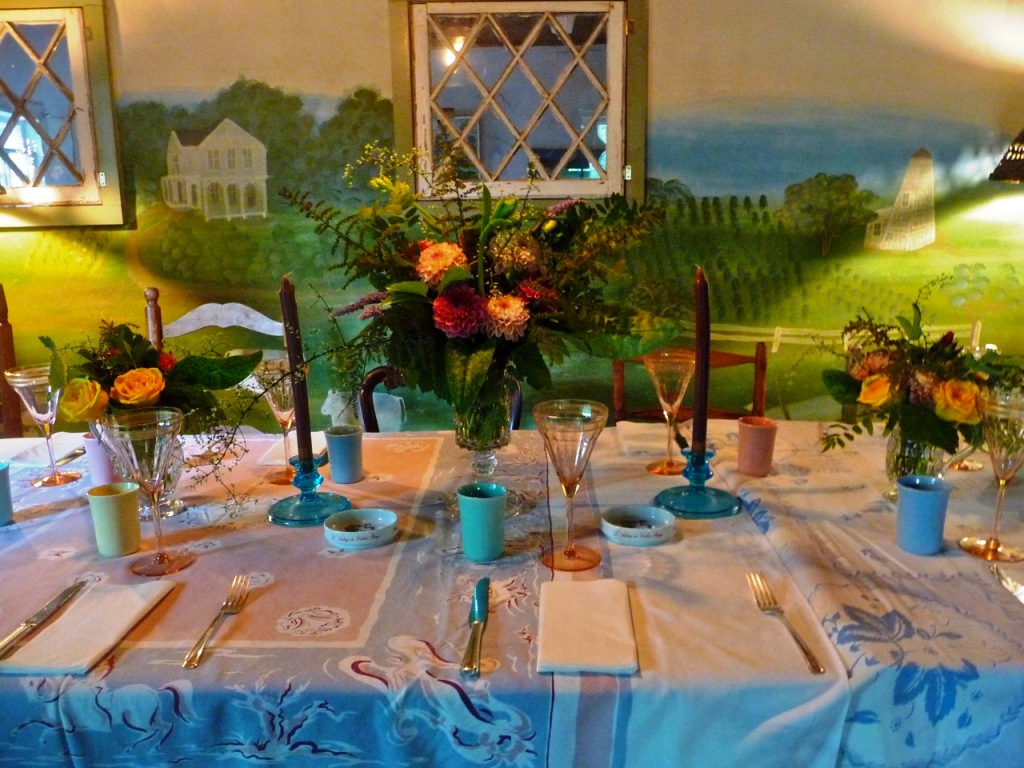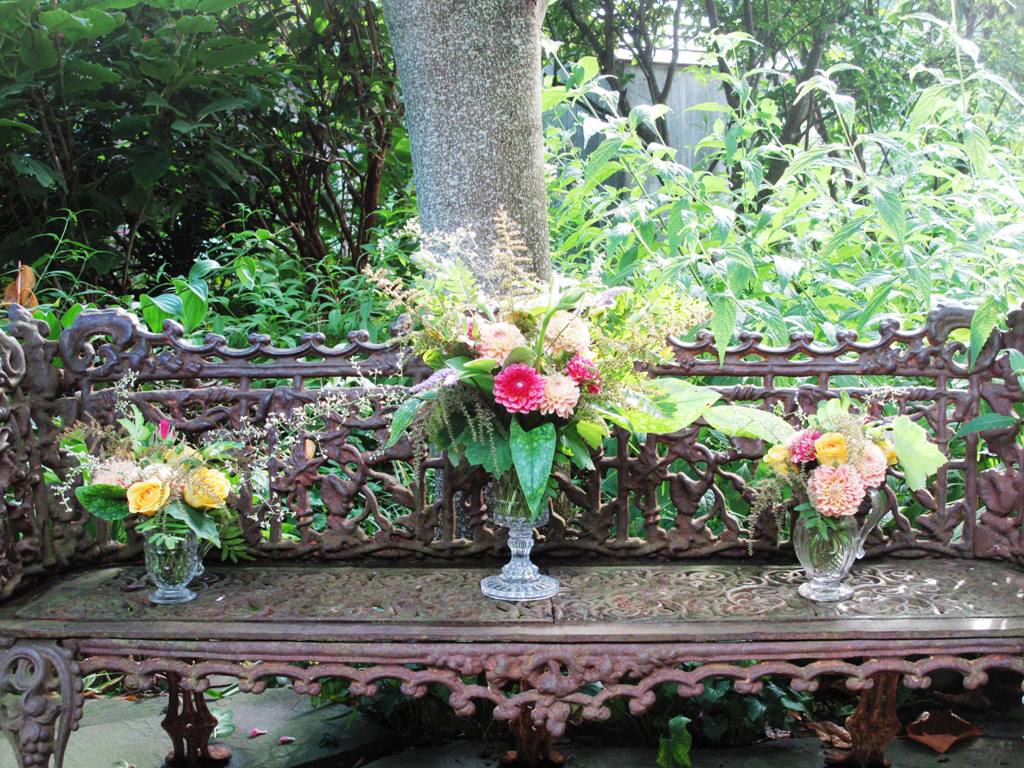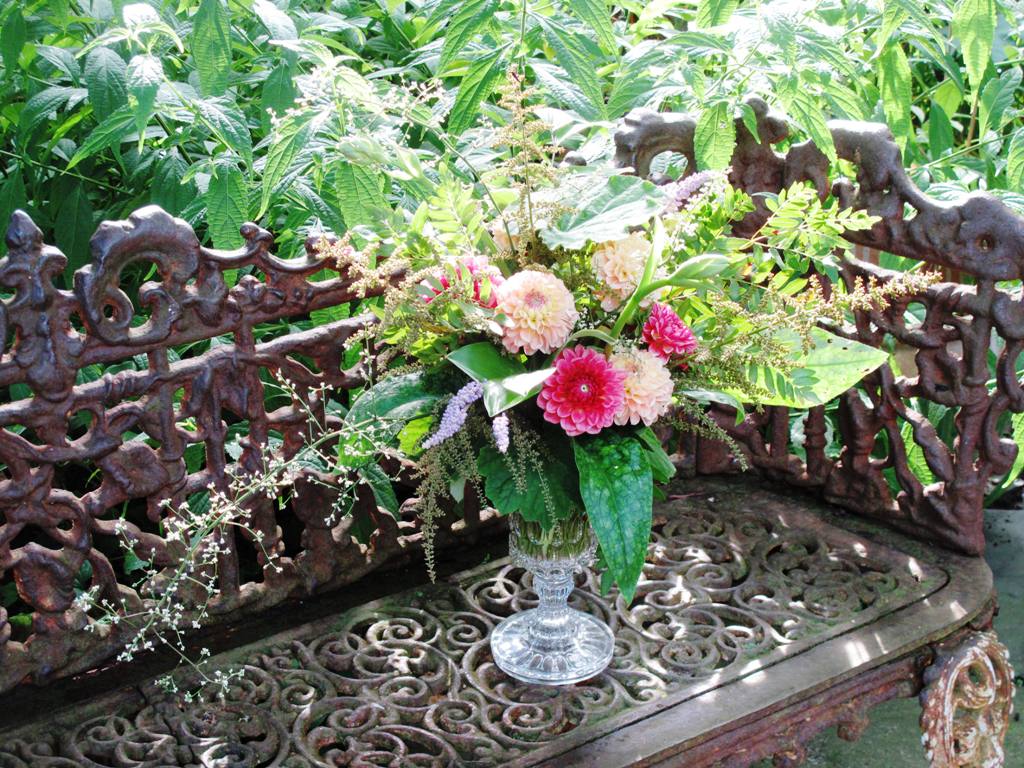Podcast: Play in new window | Download
Subscribe: Apple Podcasts | Podcast Index | RSS | More
Hello again and thank you for listening to the newest episode of the Slow Flowers Podcast with Debra Prinzing.
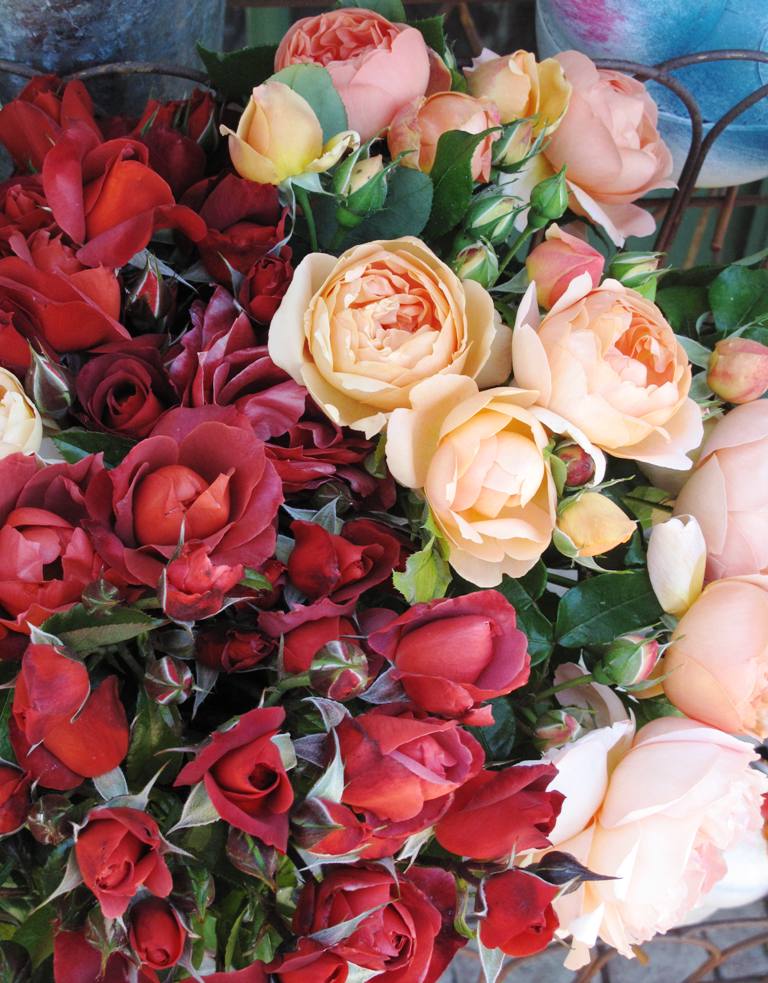
Breathtakingly beautiful roses from Rose Story Farm. American Grown and more fragrant and lovely than anything imported.
It’s February and that means Valentine’s Day is just around the corner. So I am devoting the next two weeks to talking about American-grown roses. Most people do not realize that of the 233 million rose stems sold during the Valentine’s season, only 3 to 6 percent are domestic. There is something truly wrong with this picture. American roses are being grown in Oregon and California! Next week I will introduce you to Peterkort Roses, located outside Portland . . . a fabulous source for domestic Valentine’s Day roses.
Today, though, we are celebrating Danielle Hahn, owner of Rose Story Farm in Carpinteria, California. Located just south of Santa Barbara, where truly magical growing conditions for all types of flowers seem to exist, Rose Story Farm is a family endeavor specializing in old English, heirloom and garden roses for the specialty cut flower trade.
These roses are field-grown and you’ll notice that many of the varieties listed on the farm’s web site are types of roses found in the home garden. Because of this, they do not bloom all that prolifically in February. That’s okay with Dani and her crew. Their core business serves wedding parties that take place between May and October.
Situated on a former avocado and lemon farm, this visually enticing venue offers many useful lessons in the viability of old-fashioned farming practices in today’s modern agri-business world (the kind of practices that were natural to our great-grandparents, for example.). Yes, this is an organic flower farm where hundreds of varieties of old garden and English roses thrive. It’s also a beautiful agritourism destination that attracts rose lovers from around the world as it educates and inspires everyone who visits to grow and enjoy roses in their own environment.
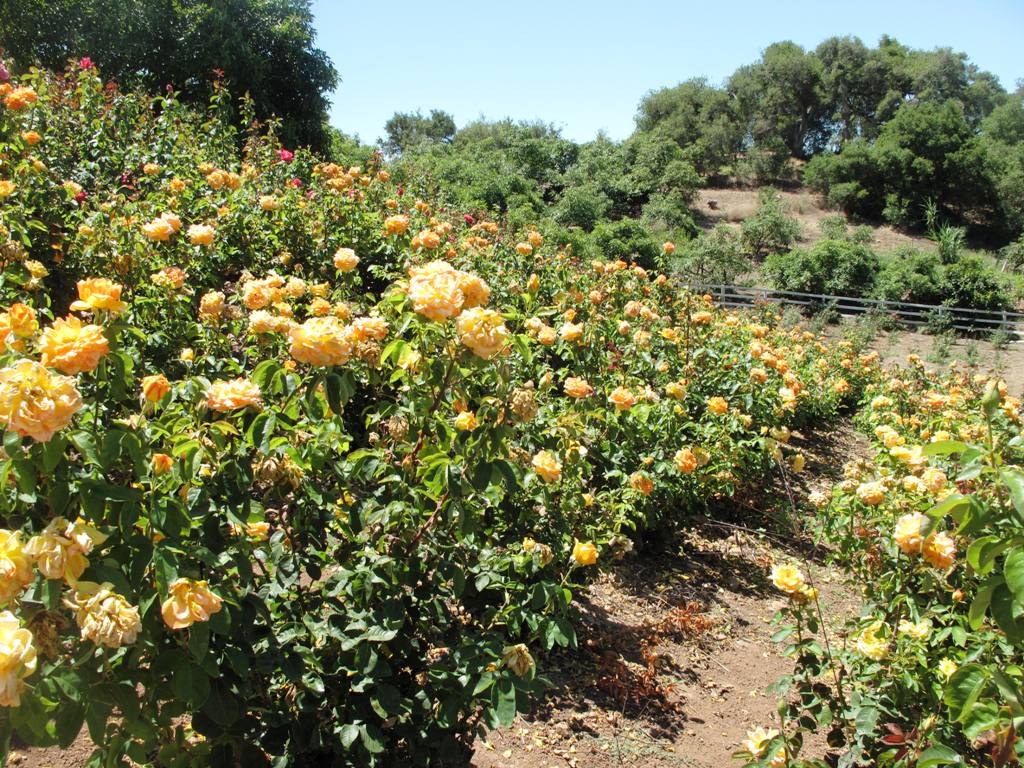
The setting in this little valley near the Pacific Ocean is quite benign – and so perfect for roses.
There are no fussy hybrid teas here, although there are varieties bred with ancient parentage for cherished traits like their long-lasting perfume. You will find row upon beautiful row of floribundas and climbers, chosen for bloom color, petal arrangement, and most of all — FRAGRANCE (scents like anise, clove, spice, honey, baby powder, a juicy peach, citrus…fill one’s nostrils).
The rose shrubs are planted on gently sloping hills, arranged like a technicolor vineyard. Organic mulch from a nearby mushroom farm cushions and nourishes the soil over their roots.
Tens of thousands of luscious roses are lovingly cared for by a small crew of farmers who know exactly when to harvest them. Can you imagine an east coast bride who simply MUST have a romantic, voluptuous rose bouquet of say ‘Fair Bianca’? It’s possible for her floral designer to order armloads of this vintage rose from Rose Story Farm.
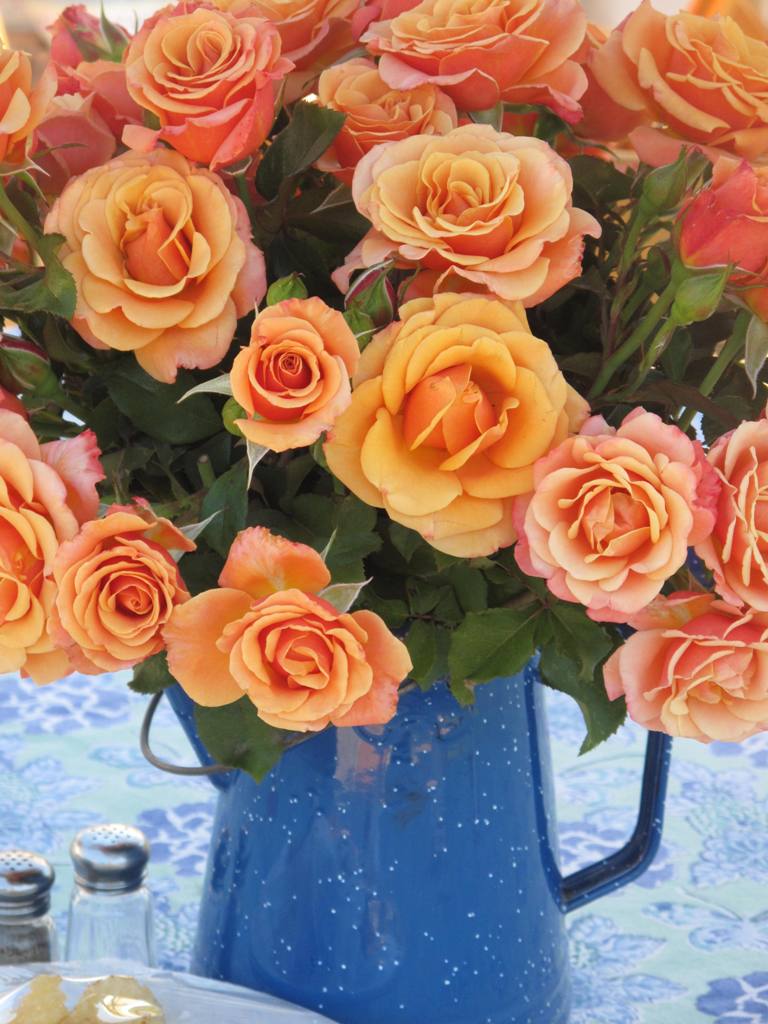
Stunning. Nothing more to say. Drink it in and imagine the awesome fragrance! Rosa ‘Singin’ in the Rain’
Say her wedding is on a Saturday. On Thursday, the roses are picked, hydrated and conditioned, de-thorned and carefully gathered into bundles of 10 stems. The cut ends are packed in wet moss to keep the roses hydrated; the flower heads are gently nestled in tissue paper; each bunch is packed in an ice-filled box and shipped overnight (Fed-Ex; next morning delivery) to wedding and event florists coast to coast. Around the country, on Friday mornings, the boxes of these Carpinteria-grown roses show up at floral studios and flower shops, serving as an enduring gift of romance, nostalgia and sensory delight.
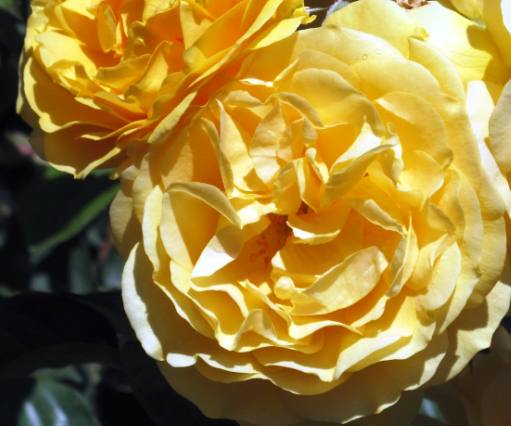
This is the famed ‘Julia Child’ rose, which Dani’s family friend Julia Child selected from plant trials at Rose Story Farm.
Last weekend, on February 1st, Dani was honored with the coveted “Great Rosarians of the World” award in a ceremony at the Huntington Botanical Garden in San Marino, near Pasadena.
This award recognizes major figures in the world of roses and honors their work in creating and promoting the flower. In the past 11 years, the Great Rosarians program has become a famous event in the world of rose growing, breeding, education and beyond. Dani is in excellent company, with past recipients including David Austin himself, Stephen Scanniello, Wilhelm Kordes III, Roger Phillips and Martyn Rix, and many others. The GROW award will also bring Dani to New York City in June, where she will be hosted by the Manhattan Rose Society for a series of events and lectures.
Click here to learn more about the American Garden Rose Selections, the organization of trial gardens and experts who evaluate new plant introductions for their superior qualities.
httpv://www.youtube.com/watch?v=0npPBezQOBg
Here is Dani’s full bio as it appeared in the Great Rosarians of the World’s press material:
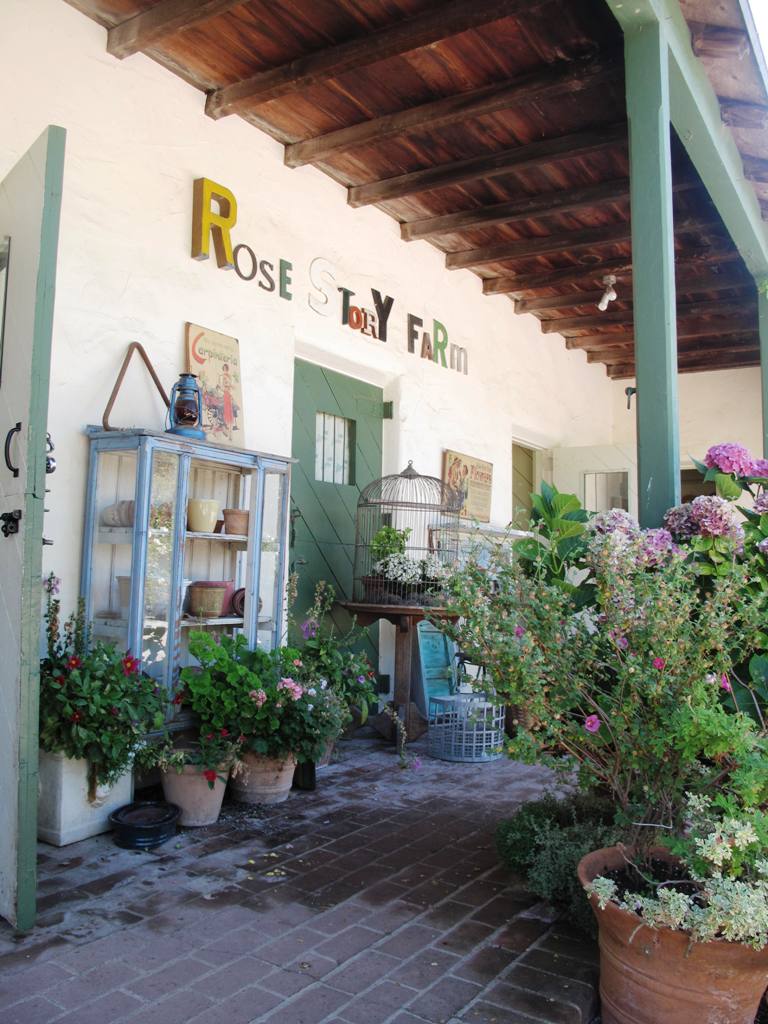
The old horse stables at Rose Story Farm are now the headquarters for this thriving specialty cut flower business.
Danielle Hahn is the owner of Rose Story Farms in Carpinteria, California, a boutique rose farm for cut roses. Because of her skills and dedication to the rose, she has been able to develop a business model that combines growing roses and education.
Danielle has maintained a hands-on approach to satisfy her market and has given this segment of the rose industry a successful working model, which encompasses the small boutique rose nursery and small organic farmer, for others to follow. Her farm is a prime model for the future of small family farms to specialize into niche areas and succeed. She has expanded her business to include the valuable component of educational tours which help inform and inspire her audience with the knowledge to grow healthy roses successfully.
Growing from a lifelong love of flowers and gardening, Rose Story Farm has become the focal point of a wonderful mixture of business and life. From the first day the mission was to produce beautiful, fragrant, romantic garden roses in exquisite shapes and colors. Now more than 120 varieties are scattered over the 15-acre farm.
Tours are led by Danielle twice weekly, and a variety of seminars focused on garden design, rose cultivation and flower arranging are given throughout the year. A major theme of the educational effort is to demystify the process of growing and caring for roses. “Roses are magical and forgiving–they repay any effort on their behalf ten-fold,” says Dani. “We named the farm ‘Rose Story Farm’ because the roses are central to some of our most enchanting and memorable experiences. We encourage clients, visitors, and friends to exchange their rose stories with us, and in this way to share what we find romantic, passionate, joyful and sustaining.”
Born in Santa Barbara, California, Dani attended local schools until she entered Stanford University. She graduated three years later with honors with a BA in psychology and a minor in Italian. Having played on the Stanford Tennis Team for three years, and being a ranked national junior tennis player, her first job out of college was managing an exclusive tennis club in Manhattan. Returning to Santa Barbara in 1978, she opened a series of retail stores over the next 10 years in Southern California. At the same time she was the founder and managing partner of an innovative gift business that designed, manufactured, packaged and ultimately delivered gifts for entertainment corporations. With the birth of Geoffrey, her second son, in 1993, she backed away from the majority of her business responsibilities to focus on her family.
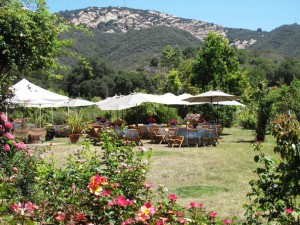
Here’s a glimpse of the larger setting at Rose Story Farm. I took this photo last July when attending an industry luncheon in the garden.
Her extensive experiences proved invaluable in 1998 when Danielle and her husband, Bill decided to expand the family avocado farm into a boutique rose business with the addition of 1,000 bushes, all of them garden roses.
The farm now has over 25,000 bushes and since that time Danielle has overseen the steady growth and development to the point where thousands of roses are cut each day and shipped throughout the United States.
Currently she manages all employees and makes the day-to-day decisions for the business, markets the products, selects the roses for production, designs rose gardens for clients worldwide, designs and maintains the farm’s gardens used for weddings and special events, oversees the rose boutique and leads the way on product development–a rose based perfume and body care line are currently in the works.
Dani is an active member of the Santa Barbara Rose Society, the American Rose Society, and the Garden Club of America in Santa Barbara. She is the founder and sustaining patron of the Carpinteria Community Service Toy Fund, a non-profit organization that raises money each year for the families of disadvantaged field workers in the Carpinteria Valley.
The excitement and beauty of this enterprise and of Danielle herself has been featured in Santa Barbara Magazine, Wine Country Living, Sunset, Victoria Magazine, Oprah Magazine, Martha Stewart Living, Veranda, and the Wall Street Journal.
She has had articles published in the 2012 American Rose Society Annual on both flower arranging and garden design. Television coverage of Rose Story Farm has been presented on “California Heartland,” a PBS special, and on NBC’s Today show. Most recently, Martha Stewart Living media filmed a segment on the farm for their online American Made series (see above). In addition to her weekly tours at the farm, Danielle is a frequent featured speaker at events that are focused on the beauty of the garden, and the special role of roses in our daily lives.
Rose lovers are invited to visit to Rose Story Farm on a Wednesday or Saturday and spend $38-$45 for a small group tour, which is followed by a delicious garden luncheon.
A gift shop filled with rose-themed and garden-inspired ware from Europe and beyond (including a few antiques) is worth a visit.
To satisfy my current made-in-the-USA obsession, I picked up a cast-aluminum, rose-bloom-shaped bundt pan so I could bake the Rose Story Farm lemon cake.
It has been my pleasure to share my podcast conversation with Dani Hahn with you. All photos are (c) Debra Prinzing, except for the portrait of Dani Hahn, courtesy of Rose Story Farm.
Because of the support from you and others, listeners have downloaded episodes of the Slow Flowers Podcast more than 6,000 times! I thank you for taking the time to join to my conversations with flower farmers, florists and other notable floral experts.
If you like what you hear, please consider logging onto Itunes and posting a listener review.
Until next week please join me in putting more American grown flowers on the table, one vase at a time.
The Slow Flowers Podcast is engineered and edited by Hannah Holtgeerts. Learn more about her work at hhcreates.net.









